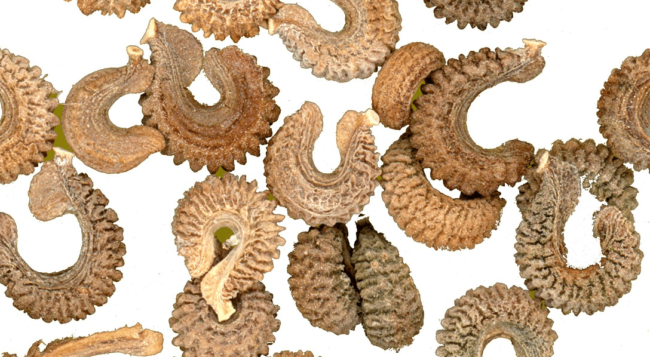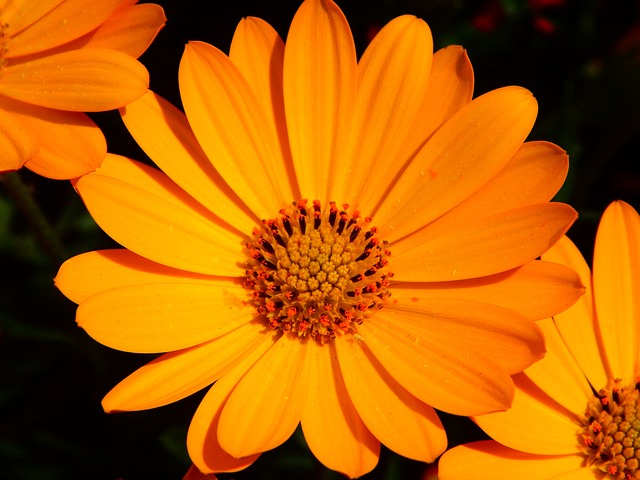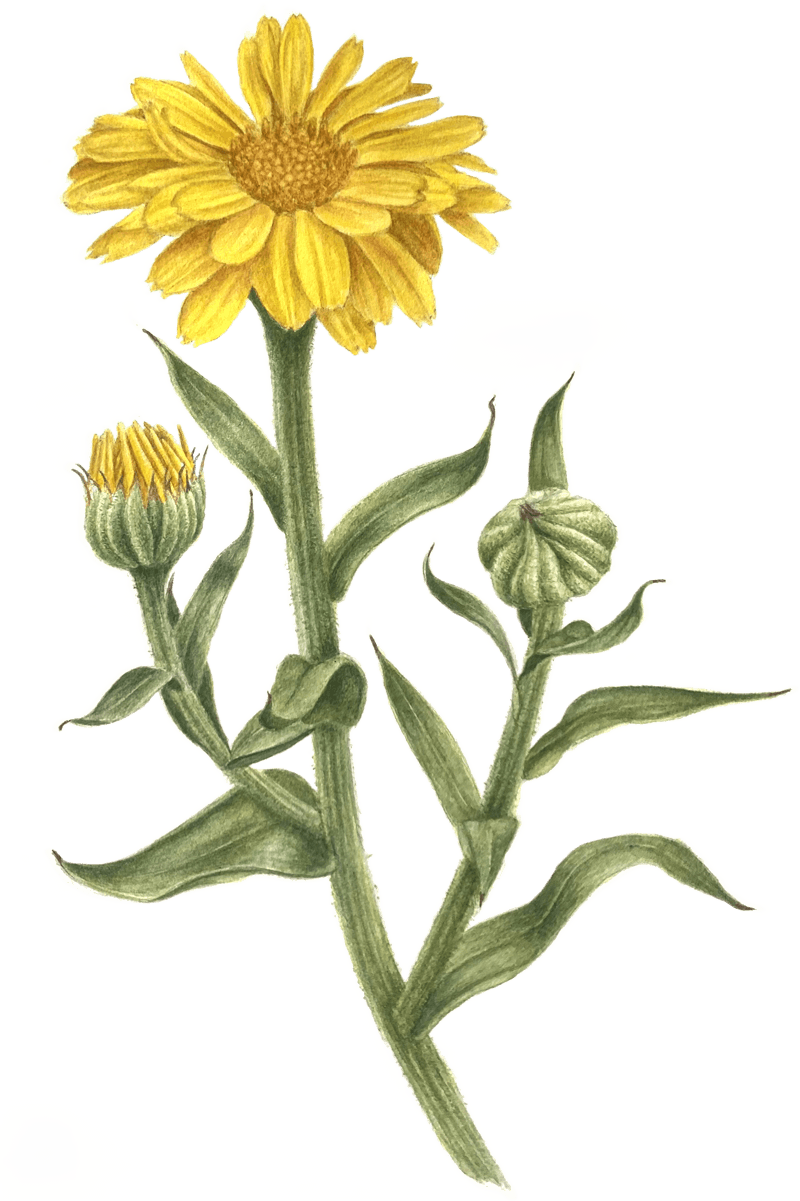The uses of calendula extend much further than it being great for wounds and making tea. So what are the benefits of calendula? It’s a pretty common question. So I’m trying to describe everything about the Calendula plant to my friend Belinda. She is a botanical artist so I know if I can help her really understand the plant, her illustration will come to life. She is already a keen observer of plants and how they live, so I only need to give her a nudge in the right direction and she gets it. Things like history, smells, weird seeds and healing properties are helpful.
All about the Calendula plant so that Belinda can draw it
I’m hoping she’s not just being tolerant while silently thinking she’s had enough. I keep rattling on with what I think are fascinating bits of info anyway:
- History Calendula has been used to heal wounds, burns, and rashes since before the time of the Romans and Egyptians.
- Smells The aroma from a cup of calendula tea is like breathing in the smell of my garden on a sunny day. Actually true. It smells clean and fresh. So does the sticky stuff that gets on you when you pick the flowers. Apparently, if you have a good magnifying glass, you can see the medicinal oil droplets coming out of the leaves. You can certainly feel it on your fingers.
- Cute seeds the flowers mature into primitive looking seeds that are weirdly curved like a crescent moon and have little hooks on them.

Calendula officinalis seeds
- Growth habits The plants grow to about 60cms and last for one year. The flowers can be orange, yellow and even pinkish with a single or double row of petals.
- Recipes The fresh flowers and young calendula leaves can be used in salads but the older leaves are very bitter. People cook the leaves along with spinach. I sprinkle the petals on my porridge. The petals also deepen the yellow colour of omelettes. The whole flowers can also be dried and added to soups and stews as a winter immune tonic. In the summertime, whole flower heads can be frozen in ice cubes then used to look beautiful as well as be edible in a drink on a hot summer day.
- The sun On a sunny day the flowers come out full force and at night or on a cloudy day it’s like they’re not wanting to come out to play and the flower heads close up.
- Insects Bees love Calendula flowers.
- Calendula medicinal uses Anti-bacterial, anti-fungal, anti-inflammatory, antigenotoxic and antiseptic properties, they are all there. It can be used diluted as part of an eye wash, mouth wash or as diluted calendula tincture for washing wounds as an antiseptic. The medicinal effect comes from people using the whole dried or fresh flowers to make a tincture, as the medicinal oils are found mostly in the green bases of the flower heads. Sometimes calendula is sold as petals only, which is fine for tea but is weaker.
- Harvesting The flowers need to be picked every few days to make the flowering season longer. If you let the plants go to seed, they will stop making new flowers. Before you store them, the petals should be completely dried and crunchy (but the green base of the flower head will be pliable when you break it open). It may take about a week to properly dry.
- Calendula for skin as an ointment Use it for rashes, wounds, burns, abrasions, eczema, acne, chickenpox, cold sores, nappy rash, cracked nipples from breastfeeding and postpartum perineal tears. Basically it’s great for skin problems full stop. Research about calendula cream uses shows that Cesarean scars respond well and the scars heal faster and the incisions were less red and swollen.
How to make Calendula tea
Belinda still hasn’t told me to shut up yet so I keep going on and on. “I love Calendula tea in the winter. It’s really nice when It’s been raining or cloudy for months”. Modern herbalists don’t really use it like an antidepressant herb, but Calendula is a cheer-me-up flower. Especially if you add some lemon balm to the tea.
- Add two full dried flowers to a teapot
- Boil some water, add to the teapot and allow it to steep for 10 minutes
- Strain and add any type of flavouring you’d like or honey
Calendula as part of the homeopathy first aid kit
For more than 30 years our clinic has taught people how to use homeopathic remedies from a first aid kit. One of the favourites in the kit has always been Calendula officinalis.
The first point taught about the remedy is that it’s from the daisy plant family Asteraceae so therefore it’s automatically known to be good for wounds. But not just any wound, it is for a person who has a reaction that seems to be overly sensitive or painful compared to the extent of the injury of the wound.
The opposite reaction would be found in someone who needs Arnica (another daisy) because when they are injured, they will be stoic and say “I’m OK” when they clearly aren’t and say they don’t need the Doctor.
What is calendula officinalis used for?
The hallmarks for the homeopathic use include the following:
- Wounds that do not heal properly (e.g. take too long to heal or heal with excessive scar formation).
- Wounds or injuries to the skin or gums that bleed too much or look as if they will become infected.
- Injuries that seem to be overly sensitive or painful compared to the extent of the injury. The pain may be sharp or “as if beaten.”
- After dentistry can help keep the mouth clean.
- Burns of the skin.
- Chapped skin of the hands or lips.
- Skin irritation of the nipples during nursing.
- Irritation of the gut after injury/wounding from an antibiotic
- The person has a tendency to get cold easily and is greatly affected by the cold.
- Can’t rest or find a comfortable position in bed (this is the same as Arnica.)
But the best information is what I’ve only just uncovered
So even though we’ve been teaching about using Calendula and I’ve been growing it in my garden for years there is an important part of the homeopathic way of using the remedy which i’ve been unaware of.
From a beautiful book simply called Asteraceae I’ve learned that just like the flower that wants to close up on dark wintery days the remedy can help people who feel aggravated on dark, cloudy days. It also remarkably has been listed for people who say they feel as if their hearing is not as good in damp weather.
As practitioners, we’ve always said to people with a first aid kit “Give a dose of Arnica to someone who has had an accident or injury and gotten bruised and stoically says go away, I’m OK.” We’ve always said to use diluted Calendula tincture as an antiseptic wash and as a homeopathic to help a wound heal especially if their pain is out of proportion to their wound. But now we have to consider teaching people to give a dose to someone who feels almost injured by the damp weather and are anxious and kind of depressed after too many cloudy overcast days. “These cloudy days have got me beaten.”
“The Asteracea are remedies for ruptures of the mind and body, when boundaries have been broken by accident, violence, abuse or invasion… The Asteracea were formerly called Compositae, because the flowers that appear to be one are in fact a composite of many small individual flowers. They are remedies for restoring a sense of wholeness and integrity to lives fragmented by trauma, and include some of the oldest plant medicines known to humanity.” Jo Evans from the Asteracea book 2020.

Calendula flower showing all the little internal flowers
The people who may benefit from the Calendula homeopathic remedy may live their life in a guarded way like a wounded person might. Their sensitivity means that pains are felt in a way that is out of proportion to the injury they have received. They act and feel disproportionately sad or sorry for themselves and start to be known as ‘highly strung’. The very opposite of people who will benefit from Arnica who tend to dismiss injuries and pains and say they are OK.
So we now can think of Calendula as a remedy to not only help heal a wound but to help the person to have more perseverance and not feel so discouraged when facing difficulties such as the wound.
The most essential quality is perseverance, endurance, and a… what shall I call it? – a kind of inner good humour which helps you not to get discouraged, not to become sad, and to face all difficulties with a smile. There is an English word which expresses this very well – cheerfulness. If you can keep this within you, you fight much better, resist much better, in the light, these bad influences which try to hinder you from progressing. The Mother
When we are thinking about the flower we can see a connection with perseverance in the way the plant keeps blooming for so many months. Even its name comes from the latin calendae, meaning little calendar possibly in reference to the capacity it has to persistently flower every month of the ‘calendar’ year when grown in its native habitat.
As mentioned before the seed is an unusual shape; often with barbs. Long ago in its wild origins, this hook allowed the seed to be snagged by the fur of passing animals. Once snagged the seed was carried from place-to-place and was persistent enough to survive wherever it went.
The botanical illustration comes to life
So an interesting discussion was had and I was able to watch the art of botanical illustration unfold before me because with all these details, Belinda built up a clear perception of the life and habits of the Calendula plant. Here is the beautiful result. You can see more of her work on instagram here.

Calendula Officinalis Botanical Illustration by Belinda Elliott
- Filling in the Gaps: A Homeopath’s Tour of a Dental Technician Lab - 08/11/2024
- Homeopathy surge worldwide - 11/08/2024
- Autism is helped by several different styles of homeopathy - 07/05/2024



